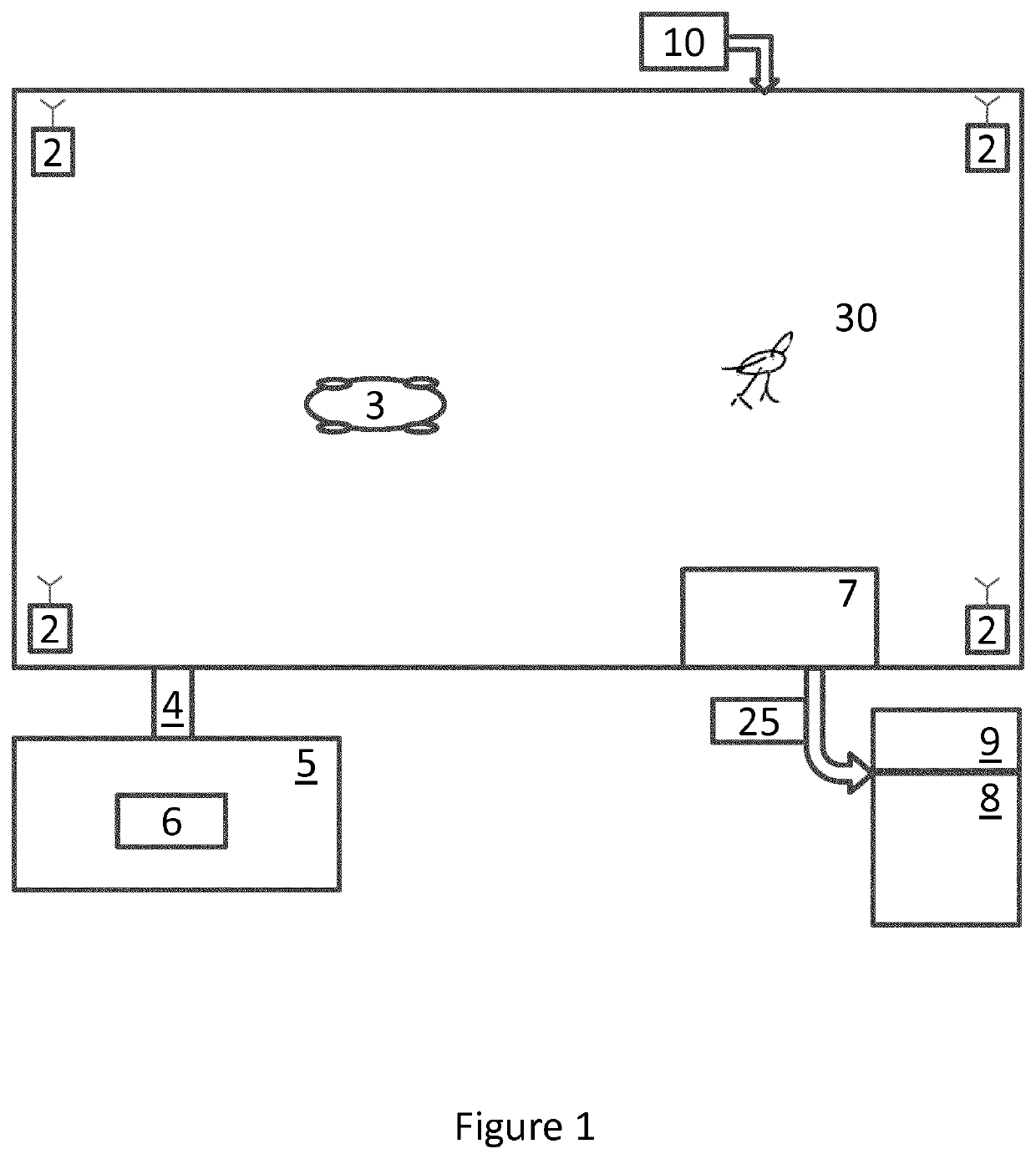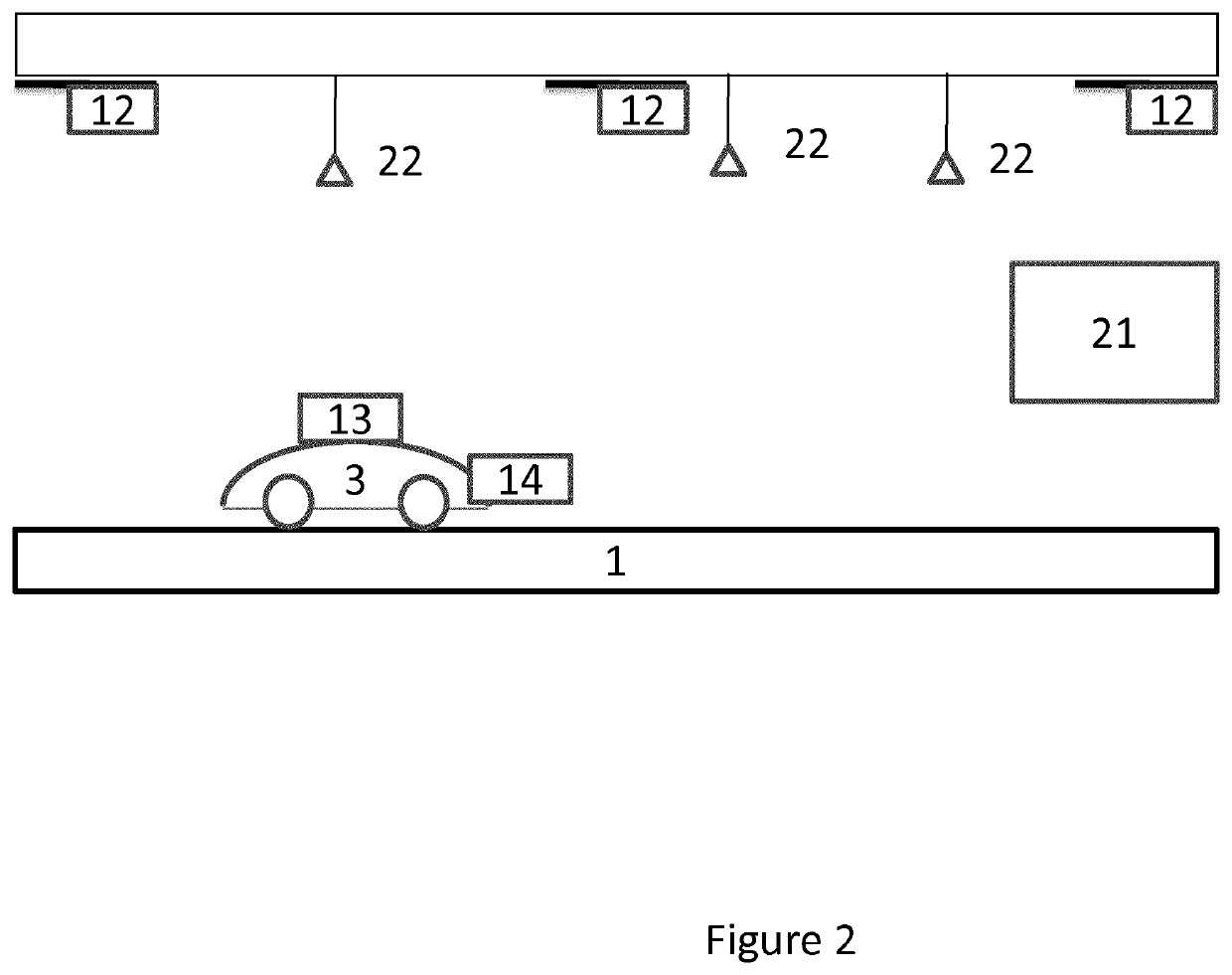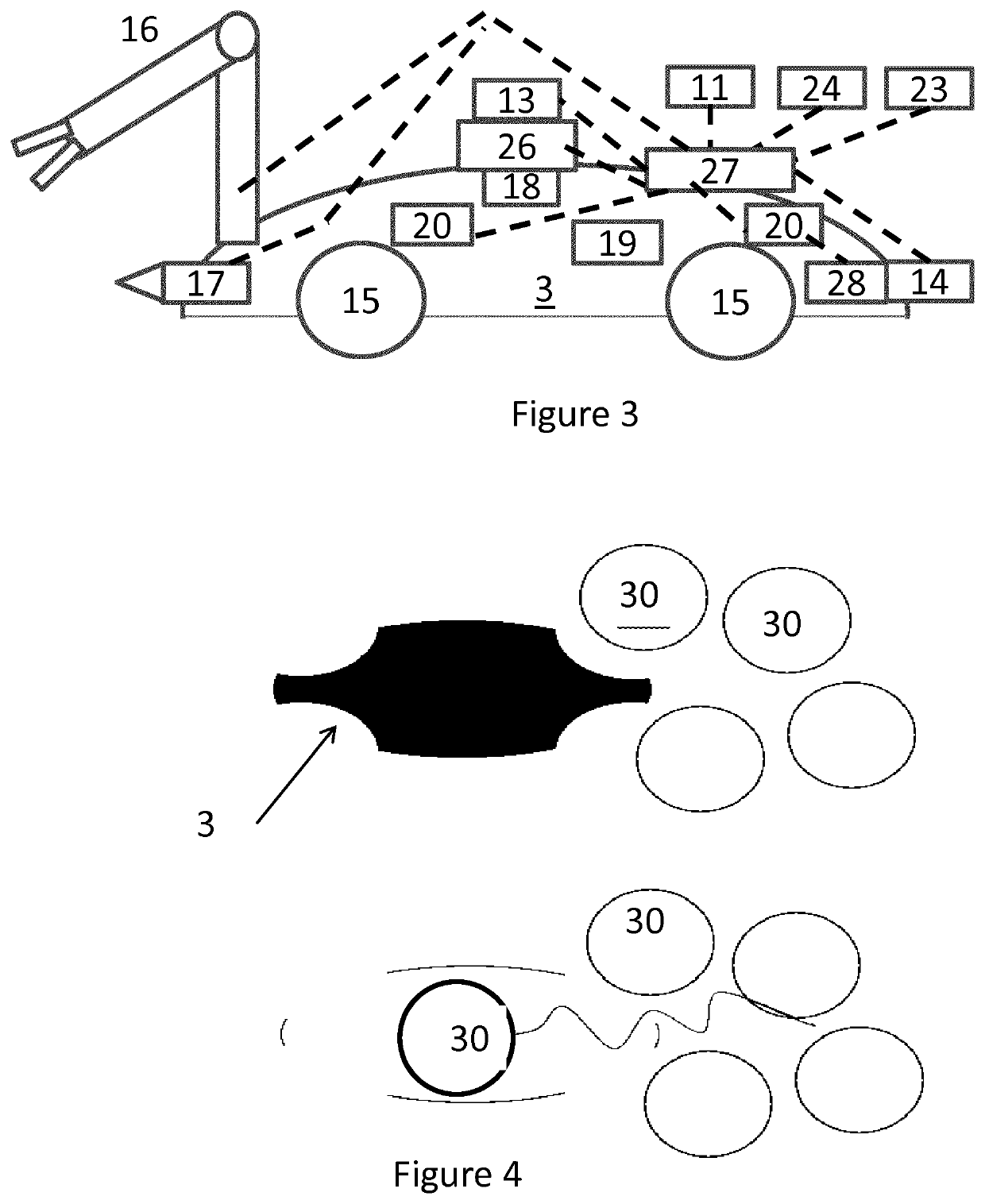Robot assisted surveillance of livestock
a technology of robotics and livestock, applied in the direction of vehicle position/course/altitude control, process and machine control, instruments, etc., can solve the problems of reducing the quality of meat, affecting the welfare of animals, and affecting the quality of life of birds, so as to improve the welfare of animals and detect the stress and aggressive behavior of animals in the shed
- Summary
- Abstract
- Description
- Claims
- Application Information
AI Technical Summary
Benefits of technology
Problems solved by technology
Method used
Image
Examples
Embodiment Construction
[0121]Embodiments of the present invention will be described with reference to FIGS. 1 to 5. FIG. 1 shows a top view of a poultry shed 10. Poultry includes, chickens (including bantams), turkeys, ducks, geese, partridges, quail, pheasants, pigeons—reared for meat, guinea fowl, ostriches, emus and rheas, but the present invention will be described in an exemplary way with respect to broilers 1. Shed 10 is equipped with a wireless communication system with one or more wireless transceivers 2. “Wireless” includes radio frequency short range communication systems such as WiFi (IEEE 802.11), or Bluetooth (IEEE 802.15.1), or Zigbee (IEEE 802.15.4) and also includes infrared communication systems including point-to-point but more preferably diffuse infrared communication systems. A robot 3 is adapted to travel over the floor 1 of the shed 10. Robot 3 is preferably a self-cleaning 4WD (Four-wheel drive), self-driven, autonomous robot in which each wheel 15 is driven independently by a motor...
PUM
 Login to View More
Login to View More Abstract
Description
Claims
Application Information
 Login to View More
Login to View More - R&D
- Intellectual Property
- Life Sciences
- Materials
- Tech Scout
- Unparalleled Data Quality
- Higher Quality Content
- 60% Fewer Hallucinations
Browse by: Latest US Patents, China's latest patents, Technical Efficacy Thesaurus, Application Domain, Technology Topic, Popular Technical Reports.
© 2025 PatSnap. All rights reserved.Legal|Privacy policy|Modern Slavery Act Transparency Statement|Sitemap|About US| Contact US: help@patsnap.com



